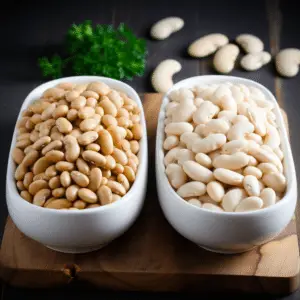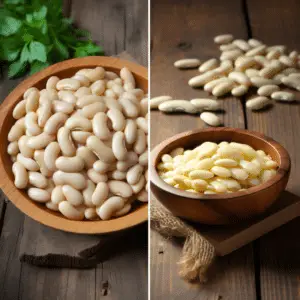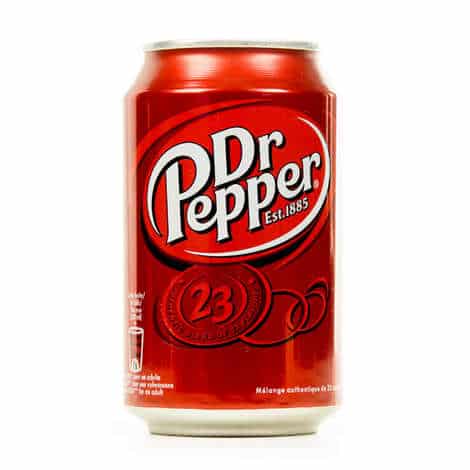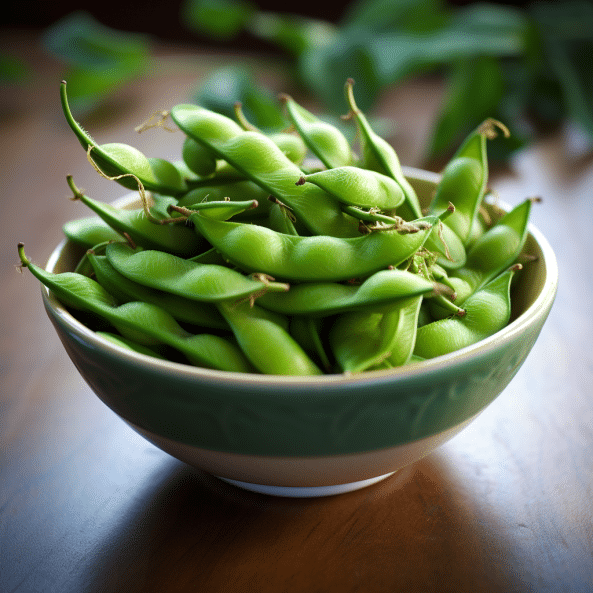Butter Beans vs Cannellini Beans: Differences Unveiled
Although all beans are legumes, they are not the same. Beans are delicious and can be cooked in many ways – stews, baked, boiled, salads, dips, or spreads. They also are a great source of protein, carbohydrates, dietary fiber, iron, essential vitamins, and minerals.
There are different types of beans, white beans, black beans, red kidney beans, etc. White beans are a group of legumes with starchy insides and white casings. Examples of white beans include butter beans, cannellini beans, great northern beans, and navy beans. T
hese beans are gluten-free, rich, and a great protein, carbs, and dietary fiber source. Butter beans and cannellini beans look similar and taste almost the same, but they are different. How? Let’s dig deeper.

Butter Beans vs. Cannellini Beans: overview
Butter beans and cannellini beans are all types of white beans and are similar in color and shape, but this is how they differ:
One, butter beans are smaller in size than cannellini beans. Cannellini beans are larger and grow in thin and long seed pods. Butter beans grow in fat and short seed pods.
Two, butter beans and cannellini beans belong to two different species taxonomically. Butter beans belong to the lutanus species and are scientifically called Phaseolus lutanus. Cannellini beans belong to the vulgaris species and go with the scientific name Phaseolus vulgaris.
Lastly, butter beans have a rich buttery flavor, while cannellini beans have an earthy and nutty taste.
About Butter Beans
Butter beans are the same as green lima beans. However, they are at a mature stage of development, and green lima beans are at a more immature stage. These beans can also be called wax beans, Madagascar beans, or chad beans.
The younger version of butter beans, green lima beans, have a green hue and are smaller. Fully matured butter beans are larger and come in cream or white color. Although butter beans are mostly cream or white, they can sometimes have brown or purple speckles on their outer coat.
Butter beans are also slightly oval with a flatter shape. The bean plants have both bush and pole varieties. Their pods are semi-circle and flattened, with around 2-3 beans per pod.
Butter beans can be sold in grocery stores as dried legumes or canned beans. You can use them in salads, soups, stews, dips, or spreads.
Nutritionally, butter beans are a good source of carbs, protein, iron, potassium, magnesium, calcium, dietary fiber, and essential vitamins. They are also low in fats and cholesterol.
About Cannelini Beans
Cannellini beans are among the most common types of white beans. They are also popularly known as white kidney beans, thanks to their shape. These beans belong to the same variety as red kidney beans – Phaseolus vulgaris.
Since cannellini bean plants are the bush type, they don’t require stalking. These plants produce pods that change color to yellow when they mature. The pods contain about 5-8 beans per pod.
White kidney beans are readily available in grocery stores as dried legumes or canned beans. When cooked, these beans have a creamy texture and are very common in Italian cuisine.
Nutritionally, cannellini beans are packed with protein, carbohydrates, dietary fiber, calcium, and essential vitamins and are low in fats and cholesterol.
Difference Between Butter Beans And Cannellini Beans
There are a couple of differences between butter beans and cannellini beans. They include:
Shape And Size
The first and most notable difference is their size and shape. Butter beans have a slightly oval shape and are flatter. They are also smaller than cannellini beans, measuring a quarter an inch.
On the other hand, cannellini beans have a perfect oval shape and are much larger. On average, they are about half an inch to one inch long.
Taxonomical Species
Butter beans belong to the same taxonomical species as green lima beans, lutanus, with a scientific name of Phaseolus lutanus.
Cannellini beans belong to the same taxonomical species as red kidney beans, vulgaris, scientifically called Phaseolus vulgaris.
Growth Pattern
The butter beans plant has bush and pole varieties, while the cannellini beans plant has bush variety alone.
Bean Pods
Butter beans have semi-circle and flattened bean pods, containing 2-3 beans per pod. Cannellini beans have longer and larger bean pods with 5-8 beans per pod.
Taste
Both butter beans and cannellini beans have the same culinary uses, stews, casseroles, soups, and salads, and they can be used interchangeably in recipes.
However, butter beans taste velvety with a rich buttery flavor, while cannellini beans have a rich, aromatic, nutty, and wholesome flavor.
Nutritional Information
Butter beans and cannellini beans have almost the same nutrition profile with a few variations. The two types of beans contain the same amount of calories and calcium.
Butter beans have more dietary fiber, sodium, sugars, fats, and carbs than cannellini beans. They are, therefore, great for individuals who’d like to add weight, thanks so the high amounts of sugars, carbs, and fats.
Cannellini beans have higher amounts of protein and iron. Thus, they are great for muscles and people struggling with low iron levels.

How Can You Substitute Butter Beans In Recipes
Although many people interchange beans in recipes, it’s crucial to establish similarities, like shape, color, or taste, before swapping one bean type with another. Cannellini is an excellent butter bean substitute. The two resemble in color and shape and are almost the same size. Other butter beans substitutes include:
Lima beans – although lima beans are not white, they resemble baby lima beans. Like butter beans, these beans have a rich buttery flavor and starchy texture.
Navy beans – navy beans are either white or pale ivory. They are the smallest among other white bean varieties. Navy beans have a soft texture and mild flavor, making them easily absorb the taste of other ingredients in the dish.
Great northern beans – like navy beans, great northern beans have a light flavor, taking the favors of other ingredients. They also hold their shape well during cooking, making them perfect for stews and roasts.
Conclusion
Butter beans and cannellini beans look almost similar and are often interchangeably used in recipes. However, the two belong to different taxonomical species and differ slightly in shape, taste, and how they grow.






